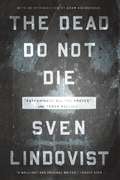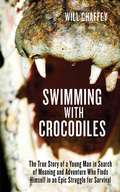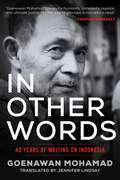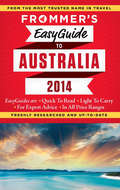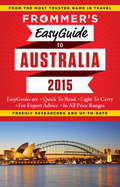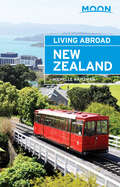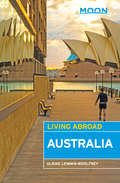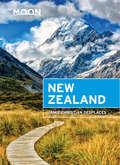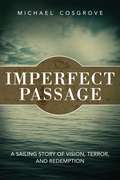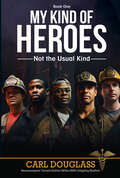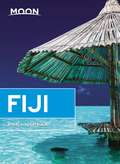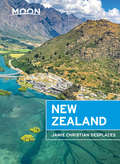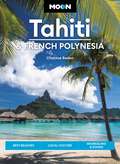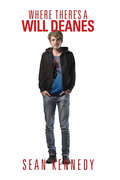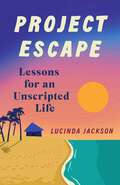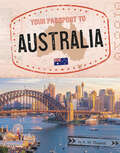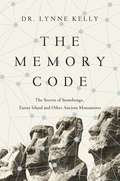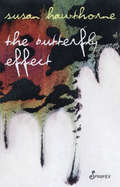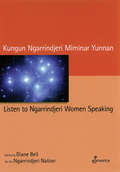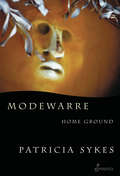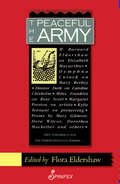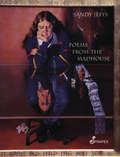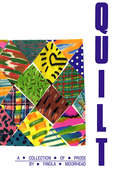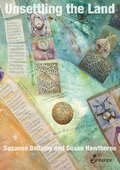- Table View
- List View
The Dead Do Not Die
by Adam Hochschild Joan Tate Sven Lindqvist Sarah DeathSven Lindqvist is one of our most original writers on race, colonialism, and genocide, and his signature approach-uniting travelogues with powerful acts of historical excavation-renders his books devastating and unforgettable.Now, for the first time, Lindqvist's most beloved works are available in one beautiful and affordable volume with a new introduction by Adam Hochschild. The Dead Do Not Die includes the full unabridged text of "Exterminate All the Brutes", called "a book of stunning range and near genius" by David Levering Lewis. In this work, Lindqvist uses Joseph Conrad's Heart of Darkness as a point of departure for a haunting tour through the colonial past, retracing the steps of Europeans in Africa from the late eighteenth century onward and thus exposing the roots of genocide via his own journey through the Saharan desert.The full text of Terra Nullius is also included, for which Lindqvist traveled 7,000 miles through Australia in search of the lands the British had claimed as their own because it was inhabited by "lower races," the native Aborigines-nearly nine-tenths of whom were annihilated by whites. The shocking story of how "no man's land" became the province of the white man was called "the most original work on Australia and its treatment of Aboriginals I have ever read . . . marvelous" by Phillip Knightley, author of Australia.
Swimming with Crocodiles: The True Story of a Young Man in Search of Meaning and Adventure Who Finds Himself in an Epic Struggle for Survival
by Will ChaffeyIn the tradition of Into the Wild, here is the riveting story of a young man seeking his own truth and finding adventure in the awesome, unforgiving power of nature. Will Chaffey is eighteen when he boards a plane in New York bound for Australia. Taking time off to work and travel, Will meets an enigmatic wanderer and herpetologist. Together they cross the inland desert to the tropical northwest coast, home to the saltwater crocodile, a known man- eater and a predator who has been hunting since the age of the dinosaurs. They devise a plan to explore the remote Prince Regent River, a trek so dangerous it had never been attempted by outsiders. Passing through harsh, primeval country, shadowed by their own exhaustion, and physically worn down, they find themselves locked in a life-and-death struggle when their food runs out and, unable to leave, they are stalked by a hungry crocodile. Filled with scenes of great natural beauty, Swimming with Crocodiles is at once the affecting account of a journey into adulthood and a hair- raising epic of survival.
In Other Words: 40 Years of Writing on Indonesia
by Goenawan MohamadA wide-ranging and beautiful collection of essays from one of world literature’s most important writers.Goenawan Mohamad is one of Indonesia’s foremost public intellectuals, and this translated volume of essays-spanning from 1968 to the present day-demonstrates the breadth of his perceptive and elegant commentary on literature, faith, mythology, politics, and history.Through the worst days of Indonesia's authoritarianism, in the face of the trauma of great violence and the chaos of democratic transition, Goenawan has never lost faith in the act of writing. Many of his essays from In Other Words were first published for Tempo, the Indonesian weekly magazine that he founded in 1971. His writings bring nuance and sympathy to difficult histories, introduce doubt to damaging certainties, and apply clarity of thought and action to times of great upheaval. Activist, journalist, editor, essayist, poet, commentator, theater director, and playwright, Goenawan Mohamad brings an unparalleled and wide-ranging perspective to the world. These essays, translated by his long-time collaborator Jennifer Lindsay, reveal a vision both uniquely Indonesian and completely universal, and indisputably establish him as one of the leading political thinkers and cultural observers in the world today.
Frommer's EasyGuide to Australia 2014
by Lee MylneSelling for a lower price than any similar guidebook, and deliberately limited to a short 256 pages, this EasyGuide is an exercise in creating easily-absorbed travel information. It emphasizes the authentic experiences in each destination:the most important attractions, the classic method of approaching a particular destination; the best choices for accommodations and meals; the best ways to maximize the enjoyment of your stay. Because it is "quick to read, light to carry", it is called an "EasyGuide", and reflects Arthur Frommer's lifetime of experience in presenting clear and concise travel advice.
Frommer's EasyGuide To Australia
by Lee MylneThe giant continent-nation of Australia, with its English-speaking population, is currently attracting a great number of visitors from North America and Great Britain. In this newly-revised, freshly-researched guide, author Lee Mylne, who is based in Brisbane (the third most populous city in Australia), deals with the cities and areas to which most tourists go. She has been an Australian travel journalist for nearly all her working life, and has traveled to every state and territory of Australia by every means of transport. She is also a life member and past president of the Australian Society of Travel Writers.
Moon Living Abroad New Zealand (Living Abroad)
by Michelle WaitzmanAuthor and educator Michelle Waitzman first visited New Zealand in 1998-and she's been hooked ever since. Now a New Zealand citizen, Waitzman outlines all the information you need to manage your move abroad in a smart, organized, and straightforward manner in Moon Living Abroad New Zealand. She offers straightforward tips and advice on how businesspeople, students, teachers, retirees, and professionals can make a smooth transition to living in a new culture and country.Moon Living Abroad New Zealand is packed with essential information and must-have details on setting up daily life, including obtaining visas, arranging finances, gaining employment, choosing schools, and finding health care, plus practical advice on how to rent or buy a home for a variety of needs and budgets. With extensive color and black and white photos, illustrations, and maps, Moon Living Abroad New Zealand will help you find your bearings as you settle into your new home and life abroad.
Moon Living Abroad Australia (Living Abroad Ser.)
by Ulrike Lemmin-WoolfreyMake Your Move!If you've imagined yourself creating a new life abroad, but don't know where to start, Moon Living Abroad Australia has the honest and practical answers you need to make it happen. Experienced expat and Melbourne resident Ulrike Lemmin-Woolfrey knows a thing or two about adjusting to a new country.Moon Living Abroad Australia provides:Practical information on setting up the essentials, including visas, finances, employment, education, and healthcareStrategic advice on planning a fact-finding trip before making the moveEssential tips on how to find a place to live that fits your needs, whether you're a renter or a buyerA thorough survey of the best cities and regions to liveA deep exploration of the varying cultures, geography, climates, and wildlife of the vast and expansive continentInterviews with other expats who share their personal experiences building successful lives abroadSpecial tips for those with children or petsFirsthand insight from someone who's done it all Moon Living Abroad Australia provides honest advice and essential tools for anyone looking to make a new home abroad. Making a life-changing move has never been easier.
Moon New Zealand (Travel Guide)
by Jamie Christian DesplacesFrom green forests to blackened basalt, from snowy mountains to golden beaches, adventure awaits around every bend on these dramatic islands. Dive into Middle Earth with Moon New Zealand. Inside you'll find:Strategic itineraries including a week on both the North and South Islands, designed for hikers, cyclers, adrenaline junkies, history and culture buffs, and Lord of the Rings fansThe top spots for outdoor adventures, including surfing, bungy jumping, mountain biking, and trekking the Great Walks, as well as tips on how to do a New Zealand road tripThe top sights and unique experiences: Cruise the hypnotic black waters of the Milford Sound, spot wild dolphins, kiwis, and blue penguins, and explore the sprawling Waitomo Caves lit by twinkling glowworms. Go bungy jumping, paragliding, or jet skiing in Queensland, or soak in refreshing thermal pools. Embark on a multi-day trek to rugged coasts, glacial valleys, volcanoes, and fjords. Sample local sauvignon blancs in Marlborough and craft beers in Wellington, or sip cider in the Shire. Learn about Polynesian culture and history, marvel at Maori carvings, and savor a traditional hangiHow to experience New Zealand like an insider, support local and sustainable businesses, avoid crowds, and respectfully engage with the indigenous cultureExpert insight from Aukland local Jamie Christian Desplaces on when to go, how to get around, and where to stay Full-color photos and detailed maps throughout, plus a full-color detachable mapReliable background information on the landscape, climate, wildlife, and history, as well as common customs and etiquette Travel tips for seniors, families with children, visitors with disabilities, and LGBTQ travelersWith Moon New Zealand's expert advice and local insight, you can plan your trip your way.
Imperfect Passage: A Sailing Story of Vision, Terror, and Redemption
by Michael CosgroveTurning sixty isn’t the end; it’s only the beginning. Michael Cosgrove had a beautiful family, a successful career, and a lovely Southern California home overlooking the Pacific Ocean. At age sixty, he decided to leave all that behind to sail around the world. With the vision of rugged individualism and salty tales to share with his grandchildren, Cosgrove quickly realized that sailing around the world wasn’t as easy as he had imagined. From a psychotic crewmate, to sleep deprivation and mental breakdowns, to constant storms and hallucinations, Cosgrove rode the waves, trying to keep his idea of "doing something grand” alive. Alone, and thousands of miles away from everyone he loved, he was forced to ask himself one question: What in God’s name am I doing here? In his attempt to avoid the inevitable (growing old, weak, frail), Cosgrove runs amok. He breaks his budget to outfit the boat and then refuses to read the manuals. He enters unfamiliar harbors in the dead of night, hires a violent first mate, and sails headlong into ferocious storms. At the same time, he longs for the simpler days when his four daughters were still children, when his first marriage was still intact, and when his dreams were still within reach. Though driven by scenes of sheer terror, absurd folly, and deep inner searching, the tone is always buoyant and laugh-out-loud funny. Imperfect Passage is the story of one man’s perseverance against Father Time and Mother Nature, proving that with enough will, one can indeed conquer the unconquerable.
My Kind of Heroes: Not the Usual Kind—Book One
by Carl DouglassMy Kind of Heroes is the inaugural work in a compelling seven-book series by Carl Douglass, Neurosurgeon Turned Author who Writes With Gripping Realism. Carl offers a fresh take on heroism through the lens of lesser-known but equally impactful figures. My Kind of Heroes steps away from the common hero narrative that focuses on the realms of sports, entertainment, or high-profile leaders. Instead, Douglass spotlights individuals whose significant contributions have been overlooked or underappreciated. My Kind of Heroes is a collection of concise historical profiles that shine a light on individuals chosen for their quiet influence and meaningful actions, rather than their fame. Douglass's work is a tribute to those who have acted heroically without seeking the limelight—people whose stories, though not often in the headlines, are rich with inspiration and deserve our recognition and appreciation. While platforms like CNN celebrate modern-day heroes, Douglass's My Kind of Heroes stands out by broadening the definition of heroism. It goes beyond the widely recognized heroes to honor those who have made a difference behind the scenes. This unique perspective sets the stage for the six volumes to follow, inviting readers to expand their understanding of heroism and the remarkable individuals who embody it.
Moon Fiji (Travel Guide)
by Minal HajratwalaExplore the colorful reefs, volcanic canyons, emerald rainforests, and unspoiled beaches of this sparkling archipelago with Moon Fiji. Inside you'll find:Flexible itineraries including four days on Taveuni Island, five days of island-hopping in the Yasawas, and the ten-day best of FijiStrategic advice for outdoor adventurers, diving enthusiasts, honeymooners, foodies, and more, with guidance on which island is right for youMust-see highlights and unique experiences: Go scuba-diving and spot barracuda, manta rays, and dolphins. Hike the rain-filled crater of a dormant volcano, raft down the thrilling Navua River, or zip-line through old-growth yesi forests. Share an intoxicating bowl of kava with new friends, tour an inland sugar plantation, or immerse yourself in the vibrant culture of indigenous peoples at a VOU dance performance. Sample fresh papaya, passionfruit, and mangoes from local growers or go off the grid in a traditional Fijian village, where you can practice mountainside yoga and learn to river fish with localsExpert insight: Minal Hajratwala, a writer with lifelong family ties to Fiji, recommends where to eat, how to get around, and where to stay, from guest cottages and beach bungalows to luxurious resortsFull-color photos and detailed maps throughoutReliable background information on the landscape, climate, wildlife, and history, as well as common customs, etiquette, and basic Fijian and Hindi phrasebooksHandy tips for families, seniors, students, and travelers with disabilities, plus ideas for traveling sustainably and engaging with the cultureWith Moon Fiji's practical tips and local know-how, you can experience the best of Fiji.Exploring the South Pacific? Check out Moon New Zealand.
Moon New Zealand (Travel Guide)
by Jamie Christian DesplacesFrom green forests to blackened basalt and snowy mountains to golden beaches, adventure awaits around every bend on these dramatic islands. Experience Middle Earth with Moon New Zealand. Inside you'll find:Strategic itineraries including a week on both the North and South Islands, designed for hikers, cyclists, adrenaline junkies, history and culture buffs, and Lord of the Rings fansThe top spots for outdoor adventures, like surfing, mountain biking, and trekking the Great Walks, as well as tips on how to do a New Zealand road trip. Go bungy jumping, paragliding, or jet skiing in Queensland, soak in refreshing thermal pools, or embark on a multi-day trek to rugged coasts, glacial valleys, volcanoes, and fjordsCan't-miss sights and unique experiences: Cruise the hypnotic black waters of the Milford Sound, spot wild dolphins, kiwis, and blue penguins, and explore the sprawling Waitomo Caves lit by twinkling glowworms. Sample local sauvignon blancs in Marlborough and craft beers in Wellington, or sip cider in the Shire. Learn about Polynesian culture and history, marvel at Maori carvings, and savor a traditional hangiHow to experience New Zealand like an insider, support local and sustainable businesses, avoid crowds, and respectfully engage with the indigenous culture, with expert insightfrom Aukland local Jamie Christian DesplacesFull-color photos and detailed maps throughout, plus a full-color detachable mapReliable background information on the landscape, climate, wildlife, and history, as well as common customs and etiquetteHelpful resources on COVID-19 and traveling to New ZealandTravel tips: When to go, how to get around, and where to stay, plus advice for seniors, families with children, visitors with disabilities, and LGBTQ+ travelersWith Moon's expert advice and local insight, you can experience the best of New Zealand. About Moon Travel Guides: Moon was founded in 1973 to empower independent, active, and conscious travel. We prioritize local businesses, outdoor recreation, and traveling strategically and sustainably. Moon Travel Guides are written by local, expert authors with great stories to tell—and they can't wait to share their favorite places with you.For more inspiration, follow @moonguides on social media.
Moon Tahiti & French Polynesia: Best Beaches, Local Culture, Snorkeling & Diving (Travel Guide)
by Chantae RedenWhether you&’re hiking through lush forests, diving deep among coral reefs, or just kicking back on the beach, indulge in island life with Moon Tahiti & French Polynesia. Inside you&’ll find:Flexible itineraries for solo travelers, honeymooners, and families, including two weeks experiencing the best of French Polynesia, a weeklong romantic getaway, and a trip to the awe-inspiring archaeological sites of the Marquesas Islands Must-see highlights and unique experiences: Dance to the beat of Tahitian drums at a Polynesian cultural festival, admire striking views of Moorea&’s volcanic landscape from Belvedere Lookout, and fall asleep under the stars from the comfort of your overwater bungalow in Bora Bora. Venture out to the Marquesas Islands for dramatic landscapes, secluded beaches, and the best handicrafts in the region, visit ancient tikis, and feast on delicious fresh seafood and tropical fruit Outdoor adventures: Get up close with migrating humpback whales and scuba dive with sharks, manta rays, sea turtles, and more. Trek along a jungle trail in search of refreshing waterfalls, paddle a traditional outrigger canoe across a bright blue lagoon, or unwind on the pink and white shores of idyllic Tikehau How to experience Tahiti and French Polynesia like an insider, support local and sustainable businesses, avoid over-tourism, and respectfully engage with the culture Expert insight from writer, photographer, and experienced diver Chantae Reden on where to eat, how to get around, and where to stay, from overwater bungalows and luxurious resorts to budget guesthouses Full-color photos and detailed maps throughoutReliable background information on the landscape, climate, wildlife, and history, as well as common customs and etiquette Experience the best of French Polynesia with Moon. Looking for more islands? Check out Moon Fiji or Moon Bali & Lombok.
Where There's a Will Deanes (Get Out #4)
by Sean KennedyGet Out: Book FourMicah Johnson is coming back to Melbourne, and the story of him and his friends is coming to an end. Or will it be a new beginning? Will Deanes and Micah Johnson have a past, one that ranges from bitter enemies to best friends. There might be an undercurrent of something else, but Micah remains oblivious, and all Will can do is try to move on. Except now Micah’s returning to Melbourne full-time, and that means they can’t avoid each other or the tensions that arise. Will is still dealing with an injury that ended his football career, while Micah’s continues to thrive. As they face highs, lows, and family tragedies, they’ll have to get to know each other all over again. Will Micah see that Will means much more to him than a friend?
Project Escape: Lessons for an Unscripted Life
by Lucinda JacksonLucinda Jackson, a harried scientist and business executive, sets off to make a break from her corporate decades and have an “extraordinary” retirement. She launches into a five-phase “Project Escape,” complete with a vision, goals, and a scorecard of success to deliver this next chapter. Soon, Jackson and her semi-reluctant husband of thirty years are off as volunteers to the government of the Pacific island country of Palau. But while Jackson got the girl out of the corporation, even the jolt of Palau can’t fully get the corporation out of the girl. As she struggles through self-examination around purpose, identity, ego, marriage, and parenthood after years of investing so much in career, Jackson gradually learns who she is again. Whether you’re thinking ahead to retirement or are already there, Project Escape provides an unvarnished but ultimately encouraging reference in navigating the “post-career” era.
Your Passport to Australia (World Passport)
by A.M. ReynoldsWhat is it like to live in or visit Australia? What makes Australia’s culture unique? Explore the geography, traditions, and daily lives of Australian people.
The Memory Code: The Secrets of Stonehenge, Easter Island and Other Ancient Monuments
by Lynne KellyThe discovery of a powerful memory technique used by our Neolithic ancestors in their monumental memory places—and how we can use their secrets to train our own minds In ancient, pre-literate cultures across the globe, tribal elders had encyclopedic memories. They could name all the animals and plants across a landscape, identify the stars in the sky, and recite the history of their people. Yet today, most of us struggle to memorize more than a short poem. Using traditional Aboriginal Australian song lines as a starting point, Dr. Lynne Kelly has since identified the powerful memory technique used by our ancestors and indigenous people around the world. In turn, she has then discovered that this ancient memory technique is the secret purpose behind the great prehistoric monuments like Stonehenge, which have puzzled archaeologists for so long. The henges across northern Europe, the elaborate stone houses of New Mexico, huge animal shapes in Peru, the statues of Easter Island—these all serve as the most effective memory system ever invented by humans. They allowed people in non-literate cultures to memorize the vast amounts of information they needed to survive. But how? For the first time, Dr. Klly unlocks the secret of these monuments and their uses as "memory places" in her fascinating book. Additionally, The Memory Code also explains how we can use this ancient mnemonic technique to train our minds in the tradition of our forbearers.
Wombat Said Come In
by Carmen Agra DeedyA kindhearted wombat offers refuge to a parade of animal friends during an Australian bushfire in a delightful new picture book from New York Times best-selling creators Carmen Agra Deedy and Brian Lies. Australian bushfires roar above Wombat&’s home. He is fortunate that his burrow is deep below ground and he is safe. He snuggles under his crazy quilt and drinks his tea. Then, one by one, five uniquely Australian animals – Wallaby, Kookaburra, Platypus, Koala, and Sugar Glider – seek refuge from the fires, and Wombat welcomes them all.When you have the heart of a wombat, there&’s always room for one more! Fellowship, empathy, and adorable Australian animals star in this delightfully heartwarming and funny story about help in the time of trouble from author Carmen Agra Deedy (14 Cows for America, The Library Dragon, The Rooster Who Would Not Stay Quiet) and Caldecott Honoree Brian Lies (The Rough Patch, Bats at the Beach). The book will delight children with Deedy&’s engaging story and Lies masterfully rendered animals. It is an ideal read-aloud for adults seeking a story with humor and heart. Generosity and kindness provide powerful SEL themes. Older readers will get a glimpse of the unique environmental challenges presented by the country&’s annual bushfire season.
The Butterfly Effect
by Susan HawthorneThe flap of a butterfly's wing in one part of the world can cause devastating storms on the other side, just as the word "lesbian"--a force full of vitality and world-changing creativity--can destroy families and bring down governments. Evoking the ancient worlds of pre-Vedic and Sapphic lovers, medieval jonglaresas, and nuns "fingering petals and hips," as well as the contemporary world of circuses, global politics, friendship, betrayal, and death, the poems in this collection fold in on themselves, exploding into concentric rings of meaning, rich in symbol and metaphor.
Listen to Ngarrindjeri Women Speaking: Kungun Ngarrindjeri Miminar Yunnan
by Diane BellThe Ngarridjeri women of South Australia reveal their thoughts, daily challenges, and visions for the future in this moving book. The stories range from charming and delightful to jarring and shocking, and delve into matters both social and personal--including the Hindmarsh Island bridge controversy. Serving as a model for how indigenous and nonindigenous women can jointly write a book, this narrative can help indigenous women in other communities develop their own collective history and visions for the future.
Modewarre: Home Ground
by Patricia SykesIn poems that are as concentrated as pearls, Patricia Sykes explores various histories--her own, those of her forebears, and the wider histories of identity and place. Citing the intersection of three distinct philosophies with particular birds--the indigenous modewarre, the colonial biziura lobata, and the common Wathaurong musk duck--these poems set out on the winding paths of memory and aspiration, searching for answers to the questions What is home? and What is identity? Their context is local and universal, their voices are restless and insistent, their themes are as broad or as narrowly defined as the journey demands. Whether inquiring into the futuristic interventions of intra-uterine surgery, the soft and hard arguments of living outside of the placenta, or into the dispossessions of terrorism, these poems seek to confront and understand the complex meanings of belonging. Two of the included poems have received acclaim: "Modewarre--ways you might approach it" was highly commended in the Josephine Ulrick Poetry Prize, and "Sanctuary: Swan Lake, Phillip Island" won the Tom Collins Poetry Prize.
The Peaceful Army
by Flora EldershawMargaret Preston on Australian women artists; Miles Franklin on suffragist Rose Scott; Eleanor Dark on Caroline Chisholm; Kylie Tennant on the future ... Like mirrors reflecting mirrors this book shows the precarious position of women in a country's history. First published in 1938, the youngest of the contributors, Kylie Tennant, just before her death in 1988 reflected again on the intervening fifty years.Reminding us that Australia is indebted not just to 'pioneers and their wives' but to 'pioneering women'. With contributions from Mary Gilmore, Dymphna Cusack, Dorothea MacKellar and others.
Poems From the Madhouse
by Sandy JeffsA powerful collection of poetry about schizophrenia, with an introduction for young people, discussing the causes/effects .
Quilt: A Collection of Prose
by Finola MoorheadAward-winning author, Finola Moorhead stitches together essays, reviews and short stories that make an incisive comment of the process of writing.
Unsettling the Land
by Susan Hawthorne Suzanne BellamyUnsettling the Land is a relection on the plight of the land in drought-stricken times, conjuring through both text and illustration, the complex relationships that create and sustain our unique Australian landscape in all its majesty, tranquility, and its present suffering.
